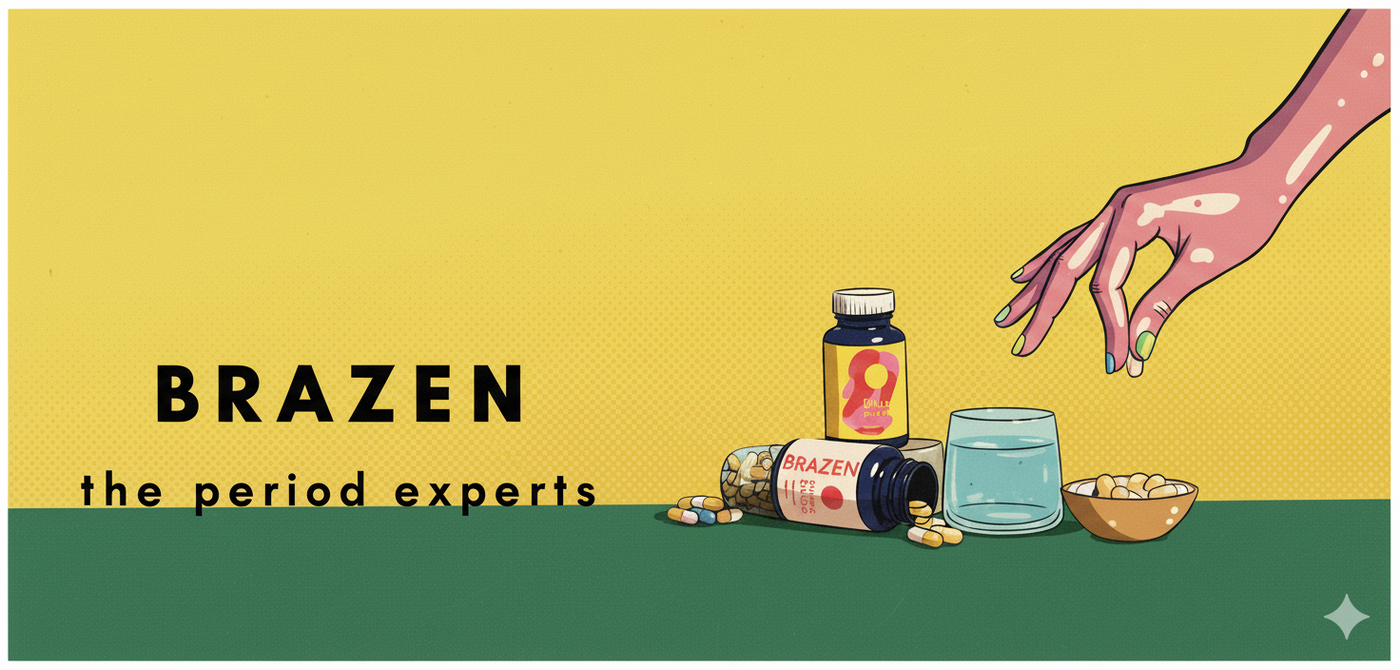The Serious Side Effect Of Menstrual Clotting On Your Fertility

Why It’s Really Important for Us to Talk About Your Menstrual Blood Clots
Is this a menstrual clot or something else?
While this may seem like TMI, getting to know what’s happening with your blood during your menstrual cycle will help you make informed decisions about your reproductive health. So, what exactly are these globs of blood that sometimes appear during your menstrual cycle? Clotting is your body’s normal response to excessive bleeding, however as you menstruate your body releases anticoagulants as the thick lining of your uterus breaks away to keep the blood thin and flowing naturally. If the blood flow becomes too heavy or stuck in the uterine lining, due to a number of factors I’ll discuss later, the anticoagulants cannot keep up and blood begins to clot. The clot itself is actually made up of coagulated blood, endometrial tissue and fibrin.
Sometimes menstrual blood clots can be confused with other types of discharge, and it’s important to understand the difference. Clots will be thick and dark red like a kidney bean because they are made up of older blood that has remained in the uterine lining for some time and is now being pushed out. Clots are not bright red or orange. If you see a lighter red or orange colored jelly-like mass during your period, this squishy substance isn’t a clot. But don't worry, it's nothing to worry about. It’s actually made up of cervical mucus mixed with the blood from your period. I know not the most appealing topic, but now you have a better sense of what you’re looking for.
Now you know what they look like, what’s causing them?
Identifying the causes behind your clotting is one of the first things we do at Conceivable. It also happens to be one of the most important things to fix when it comes to reproductive health disruptors impacting your fertility. There can be a number of things triggering blood clots, but let’s talk about two that are the likely culprits.
The first is cold. If you find that you are always cold or it’s hard to warm up, this may be one of the reasons you’re experiencing menstrual blood clots. I know you’re asking, 'What does she mean by cold? I need to put a sweater on or warm up the house to get rid of blood clots?” Well metaphorically maybe, but no seriously, your body has to have enough internal heat or energy to create velocity when it comes to your menstrual blood flow. If you’re not eating the right foods to create enough energy to power your body’s internal electrical system, your body temperature will lower and things begin to slow down internally. Think of it like a river beginning to freeze. That colder internal temperature can begin to slow the flow of your menstrual cycle and as it slows, it begins to get stuck in the uterine lining and clotting takes effect because the blood can’t move through your uterus fast enough.
Another factor that can trigger clotting during your menstrual cycles is stress. Stress can be brought on by lifestyle changes, insufficient rest and other environmental influences and can really impede a healthy menstrual cycle. Studies have shown that fear and stress can actually influence coagulation of the blood. Stress can also disturb the delicate balance that regulates the release of estrogen and progesterone during your cycle, which can lead to an extra thickening of your uterine lining and a heavier flow during your period. A really heavy flow doesn’t give the anticoagulants enough time to work and clots begin to form as blood is stuck in the uterine lining unable to be released quickly enough.
What does clotting have to do with your fertility?
Well, much like the problem of cold body temperatures freezing your menstrual cycle like a river, clots are muddying the waters of your uterine lining. A fertilized egg needs a certain thickness for implantation to occur as well as a healthy, blood rich endometrium to continue to grow. A clotted uterine lining is stagnant and stale and not healthy enough to promote fertility. So, every single month that you and your partner are trying to conceive, if you don’t have a healthy uterine lining that will encourage an attachment to the wall your chances of becoming pregnant and staying pregnant are greatly reduced.
How We can help
Our goal is to empower you with the information and online tools you can use to improve your fertility, naturally, one step a time. I’m not going to say it’s easy, making lifestyle changes takes a lot of work, but within a few short months you’ll see that getting healthy is possible. Most women experience increased blood flow and stabilized body temperatures and hormones within 90 days, giving their uterine lining the fresh, healthy surface it needs to allow implantation to succeed. That means your chances of getting pregnant and staying pregnant just went through the roof! Want to know more about how your period, basal temperatures, habits, diet, stress and exercise is impacting your ability to both get and stay pregnant. Click the link below to learn more about our personalized Fertility Potential Score.
For womxn with significant PMS and cramping, we always recommend Brazen’s Perfect Period Pack to improve liver function, improve the quality of the uterine lining, get rid of clotting, pain and, of course PMS (it is actually a good indicator of liver function)
Check it out here.

